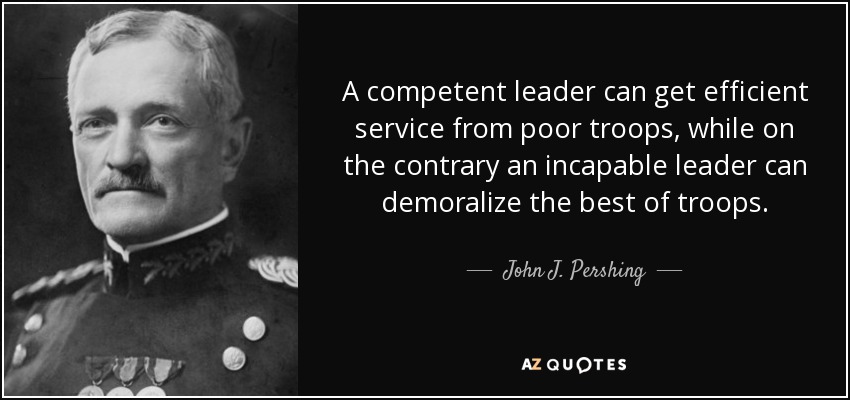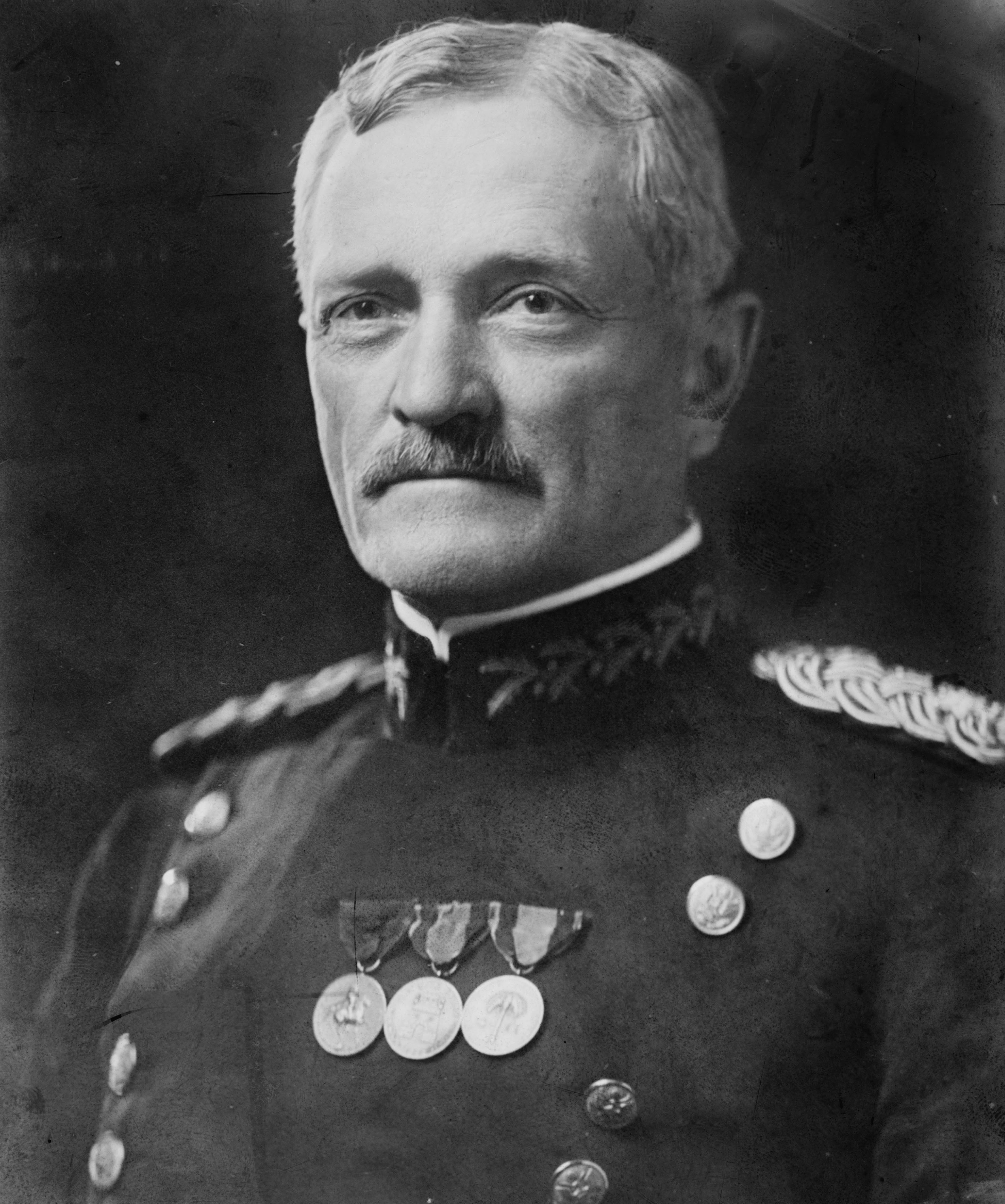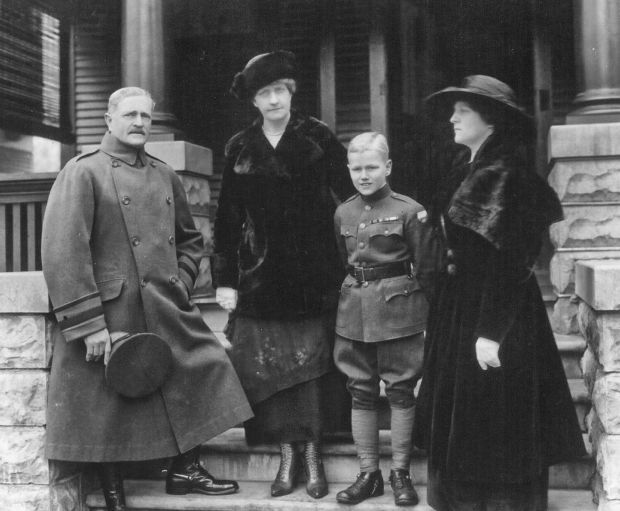

The installation of the Venustiano Carranza regime in Mexico City did not result in lasting tranquility with the United States. Events became so chaotic that the State Department issued a warning to U.S. citizens living in Mexico to leave the country. Thousands took the advice. One of Carranza's allies, Francisco 'Pancho' Villa, turned against the new president, claiming with some justification that Carranza was not making good on his reform pledges. Villa himself was a rascal, an enormous self-promoter and an occasional champion of the underprivileged. Villa was initially engaged in a struggle on behalf of the government against rival forces. He became the darling of Hollywood filmmakers and U.S. newspapermen by granting open access to his campaigns. Some claimed that he actually staged battles for the cameras and publicity.
Pershing, in full John Joseph Pershing, byname Black Jack, (born September 13, 1860, Laclede, Missouri, U.S.—died July 15, 1948, Washington, D.C.), U.S. Army general who commanded the American Expeditionary Force (AEF) in Europe during World War I. A fool's errand. That's what General John J. 'Blackjack' Pershing was sent on by President Woodrow Wilson. On March 15, 1916 the General rode off at the head of about 12,000 troops of the Punitive Expeditionary Force on a mission to find and destroy Pancho Villa and his rebel army in Mexico. General John 'Black Jack' Pershing on Dealing with Islamic Terrorism Although the indigenous uprising following American victory in the Philippine Islands (conducted by our former allies in the fight against the Spanish) ended formally in July 1902, various insurgent groups were determined to fight on.
Villa's horizons broadened considerably when he began to seek control of the Mexican government for himself. His method was to weaken Carranza by provoking problems with the United States. On January 10, 1916, his forces attacked a group of American mining engineers at Santa Ysabel, killing 18. The Americans had been invited into the area by Carranza for the purpose of reviving a number of abandoned mines.
Pancho Villa's men struck next on March 9, by crossing the border to attack Columbus, New Mexico, the home of a small garrison. The town was burned and 17 Americans were killed in the raid. War fever broke out across the United States. Senator Henry F. Ashurst of Arizona suggested that 'more grape shot and less grape juice' was needed, a none-too-subtle indictment of the teetotaling secretary of state William Jennings Bryan.

President Wilson abandoned 'watchful waiting' and appointed General John J. 'Black Jack' Pershing to head a punitive force of 12,000 soldiers to locate Villa — dead or alive. Carranza was not enthusiastic about the incursion of an American army onto Mexican soil, and became even less so the farther south the soldiers marched. Despite several close calls, Villa always managed to escape the larger and better-equipped invaders. An exasperated Pershing cabled Washington: 'Villa is everywhere, but Villa is nowhere.'

The installation of the Venustiano Carranza regime in Mexico City did not result in lasting tranquility with the United States. Events became so chaotic that the State Department issued a warning to U.S. citizens living in Mexico to leave the country. Thousands took the advice. One of Carranza's allies, Francisco 'Pancho' Villa, turned against the new president, claiming with some justification that Carranza was not making good on his reform pledges. Villa himself was a rascal, an enormous self-promoter and an occasional champion of the underprivileged. Villa was initially engaged in a struggle on behalf of the government against rival forces. He became the darling of Hollywood filmmakers and U.S. newspapermen by granting open access to his campaigns. Some claimed that he actually staged battles for the cameras and publicity.
Pershing, in full John Joseph Pershing, byname Black Jack, (born September 13, 1860, Laclede, Missouri, U.S.—died July 15, 1948, Washington, D.C.), U.S. Army general who commanded the American Expeditionary Force (AEF) in Europe during World War I. A fool's errand. That's what General John J. 'Blackjack' Pershing was sent on by President Woodrow Wilson. On March 15, 1916 the General rode off at the head of about 12,000 troops of the Punitive Expeditionary Force on a mission to find and destroy Pancho Villa and his rebel army in Mexico. General John 'Black Jack' Pershing on Dealing with Islamic Terrorism Although the indigenous uprising following American victory in the Philippine Islands (conducted by our former allies in the fight against the Spanish) ended formally in July 1902, various insurgent groups were determined to fight on.
Villa's horizons broadened considerably when he began to seek control of the Mexican government for himself. His method was to weaken Carranza by provoking problems with the United States. On January 10, 1916, his forces attacked a group of American mining engineers at Santa Ysabel, killing 18. The Americans had been invited into the area by Carranza for the purpose of reviving a number of abandoned mines.
Pancho Villa's men struck next on March 9, by crossing the border to attack Columbus, New Mexico, the home of a small garrison. The town was burned and 17 Americans were killed in the raid. War fever broke out across the United States. Senator Henry F. Ashurst of Arizona suggested that 'more grape shot and less grape juice' was needed, a none-too-subtle indictment of the teetotaling secretary of state William Jennings Bryan.
President Wilson abandoned 'watchful waiting' and appointed General John J. 'Black Jack' Pershing to head a punitive force of 12,000 soldiers to locate Villa — dead or alive. Carranza was not enthusiastic about the incursion of an American army onto Mexican soil, and became even less so the farther south the soldiers marched. Despite several close calls, Villa always managed to escape the larger and better-equipped invaders. An exasperated Pershing cabled Washington: 'Villa is everywhere, but Villa is nowhere.'
The chase lasted nine months and finally ended in February 1917, when Wilson summoned the soldiers home in anticipation of imminent hostilities with Germany.
A new Mexican constitution had been adopted in January 1917. The document sharply reduced the powers of The Roman Catholic Church and foreigners, which reflected popular disgust with those two elements of oppression. Carranza was formally elected president by a democratic vote and was recognized by the United States. Pancho Villa was a popular hero in many quarters in Mexico, but had also made many enemies over the years. He was ambushed and killed several years later, probably at the instigation of then president Obregon.
See General John J. Pershing. To other Wilson foreign affairs activities.General John J. 'Black Jack' Pershing is the highest ranked military officer buried here at Arlington National Cemetery, and the second highest ranked military officer in United States history. He was appointed General of the Armies, which indicates command over all branches of US armed services, on September 3, 1919. He is the only person to receive the rank while living. The only other person to hold this rank is Lieutenant General George Washington who received it nearly 200 years after his service in 1976. General of the Armies rank is equivalent to a six-star General status, though no insignia has ever been created.
Pershing was the president and first captain of the West Point class of 1886. He served in the Spanish-American War and the Philippine-American War. In 1897, Pershing returned to West Point as an instructor. The cadets, who disliked him because he was rigid and strict, gave him the nickname 'Black Jack' because he served with the African-American Tenth Cavalry. The nickname, meant to be callous, stuck with Pershing for the rest of his life.
Pershing quickly rose to the rank of general. In 1917, President Woodrow Wilson selected Pershing to command the American Expeditionary Forces during the Great War. Pershing's willingness to integrate into Allied operations helped bring about the armistice with Germany. After the war, Pershing served as Army Chief of Staff from 1921 to 1924. He was mentor to a generation of U.S. Army generals including George S. Patton, Dwight D. Eisenhower, George C. Marshall and Omar Bradley, all of who led the United States through World War II.
This year is the 100th anniversary of America's entrance in World War I. Visit the Welcome Center to view a special exhibition on the Great War. After that, ride the guided tram tour to learn more about General Pershing and other WWI notables.
General John J Blackjack Pershing
Amanda Varnam Arlington National Cemetery Narrator, driver, trainer and dispatcher.